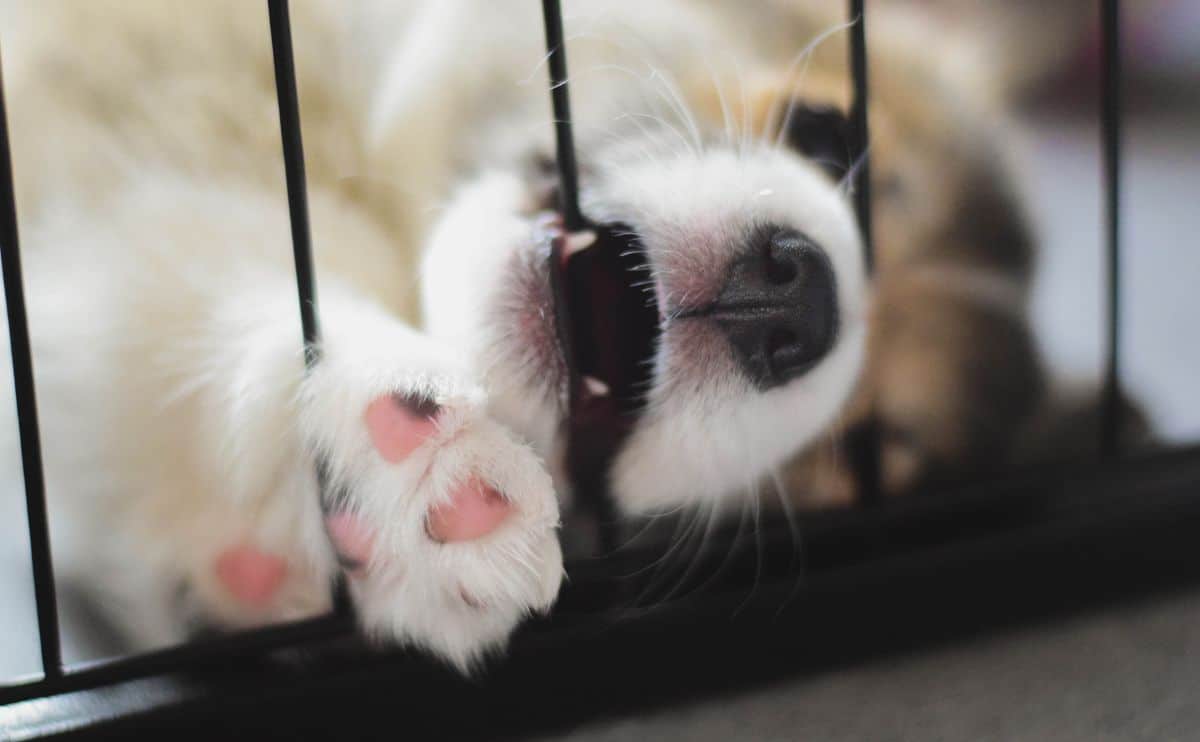Read this How To Stop A Puppy From Crying In Crate article to find useful information for you, all summarized well by us.

How to Stop a Puppy from Crying in Crate: A Comprehensive Guide
Bringing home a new puppy is an exciting time, but it can also be challenging, especially when it comes to crate training. Puppies are social creatures that need attention and affection, and being left alone in a crate can be stressful for them, leading to crying and whining. If you’re struggling to stop your puppy from crying in the crate, don’t worry – you’re not alone. Here’s a comprehensive guide to help you effectively address this challenge.
Understanding Your Puppy’s Needs
Before we delve into specific solutions, it’s essential to understand the underlying reasons why puppies cry in crates. Recognizing these needs will help you develop a tailored approach to training.
- Separation anxiety: Puppies naturally crave human companionship, and being separated from their owners can trigger anxiety and stress.
- Boredom: Puppies need mental and physical stimulation, and being confined to a crate for extended periods without anything to do can lead to boredom and frustration.
- Hunger or thirst: Ensure your puppy has access to food and water before placing them in the crate. Hunger or thirst can cause discomfort and make it harder for them to settle down.
- Medical issues: If your puppy’s crying is persistent or accompanied by other symptoms, such as lethargy or loss of appetite, it’s crucial to consult a veterinarian to rule out any underlying medical conditions.
Gradual Crate Training: Step-by-Step
The key to successful crate training is to introduce the crate gradually and positively. Here’s a step-by-step approach:
- Familiarize your puppy with the crate: Leave the crate open with a cozy blanket or bed inside. Encourage your puppy to explore and treat them when they approach the crate.
- Make the crate a happy place: Feed your puppy meals and treats inside the crate. Play short games with them in the crate. Gradually increase the duration they spend in the crate with the door open.
- Close the door for short periods: Once your puppy is comfortable entering the crate voluntarily, start closing the door for brief periods while you’re nearby. Gradually extend the closing time as they adjust.
- Exercise and mental stimulation before crate time: Tire your puppy with play or exercise before putting them in the crate. This will reduce their boredom and make them more likely to settle down.
Expert Tips for Calming a Crying Puppy
If your puppy is crying in the crate, try these expert tips to soothe them:
- Cover the crate: A blanket or towel draped over the crate can create a cozy, den-like atmosphere that helps calm anxious puppies.
- Use white noise: The constant droning of white noise, such as a fan or white noise machine, can mask unfamiliar sounds and provide a calming effect.
- Play soothing music: Relaxing music can help distract your puppy and reduce their anxiety.
- Give them a safe chew toy: A chew toy can provide comfort and distraction, helping your puppy settle down.
Frequently Asked Questions (FAQs)
- What age should I start crate training my puppy? Puppies can start crate training as early as 8-10 weeks old.
- How long can I leave a puppy in a crate? Puppies should not be left in a crate for more than 4-6 hours at a time.
- What should I do if my puppy cries in the crate overnight? If your puppy cries overnight, try to determine if they are crying due to anxiety, boredom, or discomfort. Try soothing techniques and ensure their needs are met.
- Is it cruel to crate train a puppy? Crate training is not cruel if done correctly and gradually. It can provide a safe and secure space for your puppy while you’re away.
Conclusion
Crate training can be a challenging but rewarding experience. By understanding your puppy’s needs, implementing gradual training techniques, and utilizing expert tips, you can effectively stop your puppy from crying in the crate and create a positive association with their crate. Remember, patience, consistency, and positive reinforcement are key to successful crate training.
Do you find this article helpful? Share your thoughts or ask any further questions in the comments below. Let’s work together to provide a stress-free crate training experience for our furry friends!

Image: www.caninejournal.com
An article about How To Stop A Puppy From Crying In Crate has been read by you. Thank you for visiting our website, and we hope this article is beneficial.